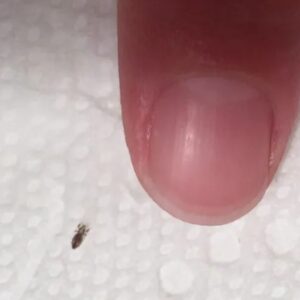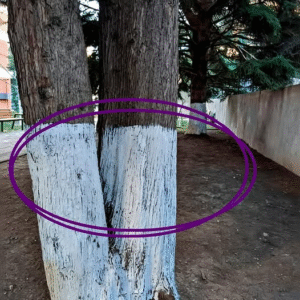Mosquitoes are often considered one of the most annoying pests, buzzing around our ears and leaving itchy bites in their wake. However, their attraction to humans is not as random as it seems. Many people are left wondering why they seem to be mosquito magnets, while others remain largely unbothered. Understanding the science behind mosquito attraction can help us better protect ourselves from these pesky insects.
In this article, we will delve into the various factors that influence mosquito attraction, from body odor and carbon dioxide emissions to genetic factors and clothing choices. By exploring these elements, we can gain insights into how mosquitoes select their targets and what we can do to make ourselves less appealing to them.
1. The Science Behind Mosquito Attraction
Mosquitoes are highly specialized insects with sophisticated sensory systems that help them locate their hosts. They rely on a combination of chemical, visual, and thermal cues to find their next meal. Research has shown that mosquitoes can detect carbon dioxide from up to 50 meters away, which is one of the primary signals they use to home in on potential hosts.
In addition to carbon dioxide, mosquitoes are attracted to certain chemicals found in human sweat and skin. Lactic acid, ammonia, and other compounds are known to play a role in mosquito attraction. These chemicals vary from person to person, which is why some individuals are more prone to mosquito bites than others.
2. The Role of Body Odor in Mosquito Preference
Body odor is a significant factor in mosquito attraction. The bacteria on our skin break down sweat into compounds that mosquitoes find irresistible. Studies have shown that people with a higher concentration of certain bacteria on their skin are more attractive to mosquitoes. For example, individuals with higher levels of Staphylococcus and Pseudomonas bacteria tend to receive more bites.
Moreover, the composition of body odor can be influenced by diet, genetics, and personal hygiene. Consuming certain foods, such as garlic and onions, can alter body odor and potentially make a person less appealing to mosquitoes.
3. How Carbon Dioxide Emissions Attract Mosquitoes
Carbon dioxide is a major attractant for mosquitoes. Humans exhale carbon dioxide with every breath, and the concentration of this gas can vary depending on factors such as physical activity and metabolic rate. Mosquitoes have specialized receptors that can detect carbon dioxide, allowing them to locate potential hosts from a considerable distance.
Interestingly, pregnant women and individuals with higher metabolic rates tend to emit more carbon dioxide, making them more attractive to mosquitoes. This is why pregnant women often report being bitten more frequently than others.
4. Body Temperature: A Key Factor in Mosquito Selection
Mosquitoes are drawn to heat, and body temperature plays a crucial role in their selection process. Warmer bodies emit more heat, which mosquitoes can detect using their heat-sensitive receptors. This is why people who are physically active or have a naturally higher body temperature are more likely to be targeted by mosquitoes.
Additionally, areas of the body with higher blood flow, such as the forehead and wrists, are more attractive to mosquitoes due to the increased heat and carbon dioxide emissions in these regions.
5. The Influence of Blood Type on Mosquito Bites
Blood type is another factor that can influence mosquito attraction. Research has shown that individuals with Type O blood are more likely to be bitten by mosquitoes compared to those with Type A, B, or AB blood. In fact, studies suggest that people with Type O blood are twice as attractive to mosquitoes as those with Type A blood.
The reason behind this preference is not entirely understood, but it is believed that certain blood types may produce more attractive chemical signals on the skin, making them more appealing to mosquitoes.
6. Clothing Color and Its Impact on Mosquito Attraction
The color of clothing can significantly impact mosquito attraction. Mosquitoes are attracted to dark colors, such as black and navy blue, because they provide a stark contrast against the horizon, making it easier for mosquitoes to spot their targets. In contrast, light-colored clothing is less attractive to mosquitoes as it blends in with the surroundings.
Wearing light-colored, loose-fitting clothing can help reduce mosquito bites by making it more difficult for mosquitoes to locate and land on exposed skin.
7. Genetic Factors That Make You a Mosquito Magnet
Genetics play a crucial role in determining how attractive a person is to mosquitoes. Studies have shown that identical twins tend to receive a similar number of mosquito bites, suggesting a genetic component to mosquito attraction. Certain genetic traits can influence factors such as body odor, skin chemistry, and metabolic rate, all of which contribute to mosquito preference.
While we cannot change our genetic makeup, understanding the role of genetics in mosquito attraction can help us develop more targeted strategies for avoiding bites.
8. Understanding the Mosquito Lifecycle and Habitat
Mosquitoes go through four stages in their lifecycle: egg, larva, pupa, and adult. Understanding this lifecycle is crucial for controlling mosquito populations and reducing the risk of bites. Mosquitoes lay their eggs in stagnant water, and the larvae develop in these aquatic environments.
By eliminating standing water around our homes and communities, we can disrupt the mosquito lifecycle and reduce the number of adult mosquitoes. This includes regularly emptying containers that collect rainwater, cleaning gutters, and ensuring proper drainage in yards and gardens.
9. The Effectiveness of Natural Repellents Against Mosquitoes
Natural repellents, such as citronella, eucalyptus, and lavender oils, have gained popularity as alternatives to chemical insect repellents. These natural oils work by masking the chemical signals that attract mosquitoes, making it more difficult for them to locate their targets.
While natural repellents can be effective, their duration of protection is often shorter than that of chemical repellents containing DEET or picaridin. Reapplying natural repellents more frequently can help maintain their effectiveness, especially during peak mosquito activity times.
10. Practical Tips to Reduce Your Attractiveness to Mosquitoes
To reduce your attractiveness to mosquitoes, consider implementing the following tips: wear light-colored, loose-fitting clothing; use insect repellent containing DEET or picaridin; eliminate standing water around your home; and use fans to disperse carbon dioxide and body heat.
Additionally, avoid outdoor activities during peak mosquito activity times, such as dawn and dusk, and consider using mosquito nets or screens to create a barrier between you and the insects.
11. Innovations in Mosquito Repellent Technology
Recent advancements in mosquito repellent technology have led to the development of more effective and convenient solutions. For example, wearable devices that emit ultrasonic frequencies have been designed to repel mosquitoes without the need for topical applications. Additionally, new formulations of chemical repellents offer longer-lasting protection with lower concentrations of active ingredients.
Innovations such as genetically modified mosquitoes, which are designed to reduce mosquito populations by preventing reproduction, are also being explored as potential solutions to mosquito-borne diseases. These technologies offer promising new ways to combat mosquitoes and protect public health.





